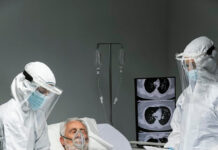

In a groundbreaking achievement, the world’s first baby has been born through conception using a fully automated, digitally controlled intracytoplasmic sperm injection (ICSI) system. This revolutionary method marks a new era in assisted reproduction, offering enhanced precision and consistency through automation.
ICSI: From Manual Expertise to Robotic Precision
ICSI, developed in the 1990s, has become a standard fertility technique where a single sperm cell is injected directly into a mature egg. Traditionally, skilled embryologists manually perform this delicate procedure. However, performance can vary widely depending on the operator.
Now, a multidisciplinary team from Conceivable Life Sciences, with locations in New York and Guadalajara, Mexico, has transformed this process through complete automation. The team included renowned embryologist Dr. Jacques Cohen, Dr. Alejandro Chavez-Badiola, and Professor Gerardo Mendizabal-Ruiz, who led the engineering efforts.
Automating All 23 Steps of ICSI
The researchers developed an advanced workstation that automated all 23 micro-steps involved in the standard ICSI procedure. The system functioned either under artificial intelligence (AI) control or digital remote operation. The pilot investigation took place at Hope IVF Mexico in Guadalajara, under ethics committee oversight.
For comparison, while skilled embryologists usually carry out ICSI manually, the automated system offered a digitally controlled, standardized approach aimed at minimizing variability, improving outcomes, and reducing operator fatigue.
AI-Powered Precision in Sperm Handling and Injection
Professor Mendizabal-Ruiz explained that the AI in the system autonomously selected sperm, immobilized it with a laser, and guided its injection into the egg with extreme precision—executing the process faster and more accurately than a human could.
Dr. Cohen emphasized the broader impact: “This innovation represents a transformative solution in assisted reproduction. It ensures consistent outcomes, enhances efficiency, and significantly reduces operator-based discrepancies.”
First Success: A Healthy Baby Boy
As reported by medicalxpress, the successful birth occurred in a 40-year-old woman who had previously failed an IVF cycle using donor eggs. During the automated ICSI cycle, five eggs underwent fertilization using the robotic system, while three served as controls with manual ICSI. The fully automated system handled all 115 procedural steps remotely, with operators in Guadalajara and New York issuing digital commands.
The process took just under 10 minutes per egg—slightly longer than manual ICSI due to its experimental nature. Nevertheless, the team expects to shorten the duration with future refinements.
Four out of five eggs fertilized using the automated system developed normally, and one high-quality embryo reached the blastocyst stage. This embryo, created under remote control from New York, was later transferred after vitrification and thawing. The resulting pregnancy progressed smoothly, culminating in the birth of a healthy baby boy.
Paving the Way for the Future of IVF
Dr. Chavez-Badiola highlighted the significance of this milestone: “This is the first system to automate every individual step of the ICSI process, including AI-based sperm selection. It’s a comprehensive leap forward from previous partial-automation attempts.”
He stressed that broader adoption of this system will require additional clinical studies to ensure safety and efficacy. However, this success already marks a significant shift toward fully automated fertility labs.
The Broader Landscape of IVF Automation
Automation is steadily advancing across the IVF laboratory. Clinics now use AI to monitor embryo development, select sperm and eggs, and manage cryo-storage of gametes and embryos. This latest development pushes the boundaries even further, showing that even the most intricate procedures like ICSI can now be reliably performed by machines—guided by AI and remote control.
As IVF technology continues to evolve, this first-of-its-kind birth signals the beginning of a new chapter in reproductive medicine, where automation and artificial intelligence work hand in hand to improve outcomes and expand access to care.























